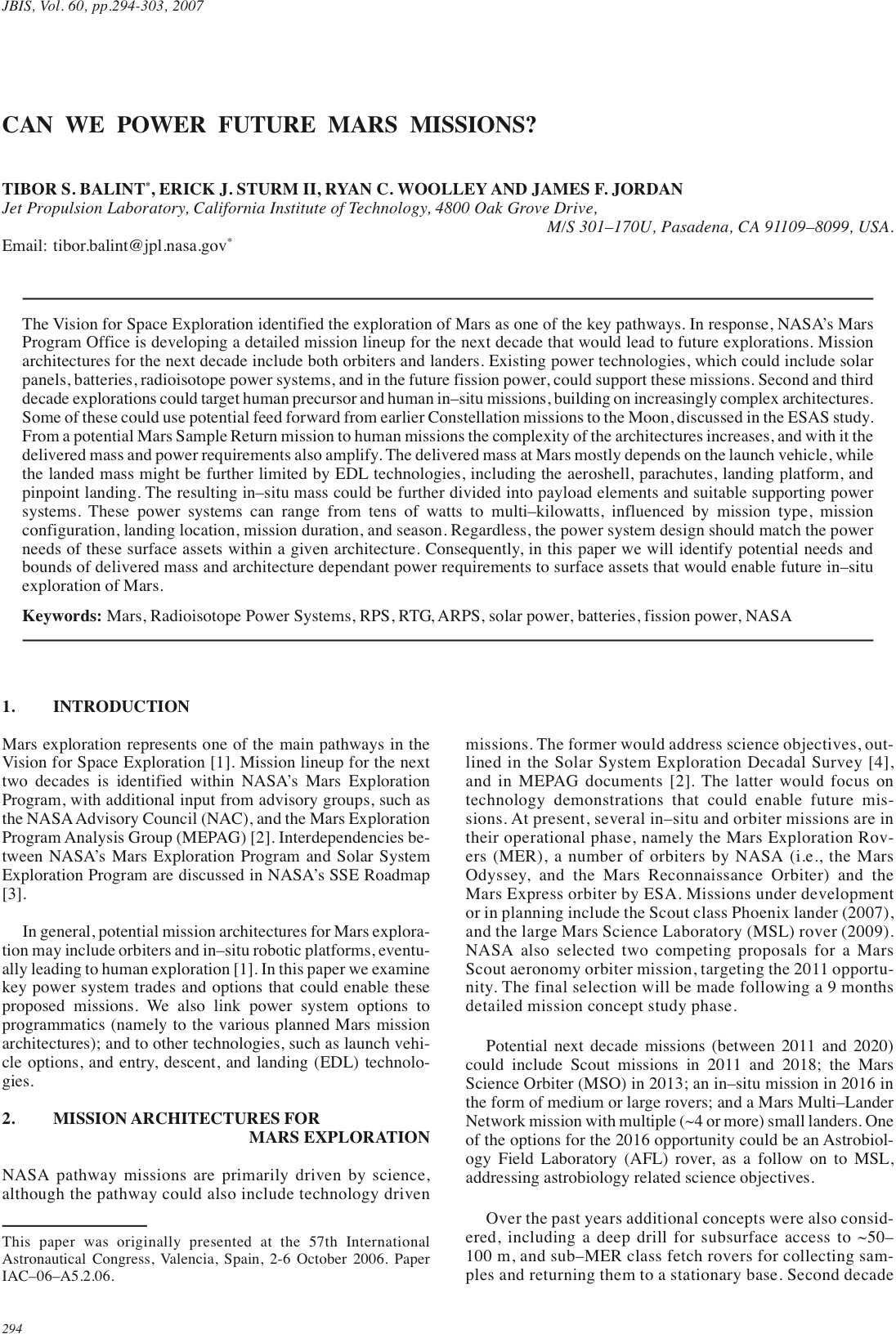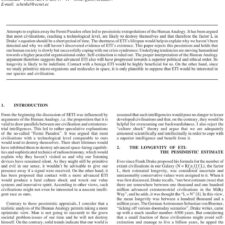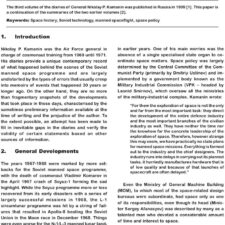Can we Power Future Mars Missions
£5.00
T. S. Balint; E. J. Sturm II; R. C. Woolley; J. F. Jordan (2007), JBIS, 60, 294-303
Refcode: 2007.60.294
Abstract:
The Vision for Space Exploration identified the exploration of Mars as one of the key pathways. In response, NASA’s Mars Program Office is developing a detailed mission lineup for the next decade that would lead to future explorations. Mission architectures for the next decade include both orbiters and landers. Existing power technologies, which could include solar panels, batteries, radioisotope power systems, and in the future fission power, could support these missions. Second and third decade explorations could target human precursor and human in-situ missions, building on increasingly complex architectures. Some of these could use potential feed forward from earlier Constellation missions to the Moon, discussed in the ESAS study. From a potential Mars Sample Return mission to human missions the complexity of the architectures increases, and with it the delivered mass and power requirements also amplify. The delivered mass at Mars mostly depends on the launch vehicle, while the landed mass might be further limited by EDL technologies, including the aeroshell, parachutes, landing platform, and pinpoint landing. The resulting in-situ mass could be further divided into payload elements and suitable supporting power systems. These power systems can range from tens of watts to multi-kilowatts, influenced by mission type, mission configuration, landing location, mission duration, and season. Regardless, the power system design should match the power needs of these surface assets within a given architecture. Consequently, in this paper we will identify potential needs and bounds of delivered mass and architecture dependant power requirements to surface assets that would enable future in-situ exploration of Mars.





